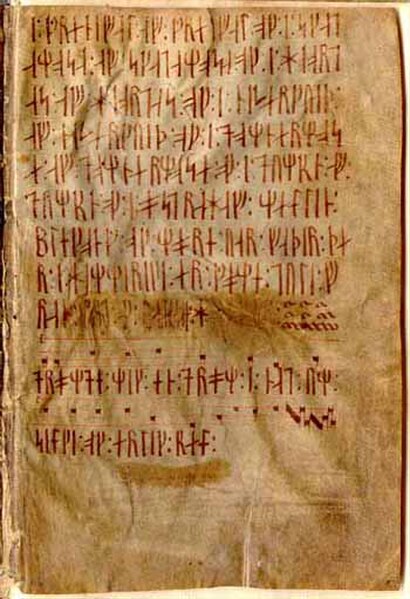The Codex Runicus is a codex of 202 pages written in medieval runes around the year 1300 which includes the oldest preserved Nordic provincial law, Scanian Law pertaining to the Danish land Scania (Skåneland). Codex Runicus is one of the few runic texts found on parchment. The manuscript's initials are painted various colors and the rubrics are red. Each rune corresponds to a letter of the Latin alphabet.
Leaf (f. 27r.) of Codex Runicus, a vellum manuscript from c. 1300 containing one of the oldest and best preserved texts of the Scanian Law, written entirely in runes.
The last leaf (f. 100r) of the Codex Runicus manuscript with the oldest musical notation found in Scandinavia.
The runic alphabet utilized on f. 27r and f.100r. (Medieval Runes used for c and y are added.)
Transliteration of f.27 r from the first rubric.
The medieval runes, or the futhork, was a Scandinavian runic alphabet that evolved from the Younger Futhark after the introduction of stung runes at the end of the Viking Age. These stung runes were regular runes with the addition of either a dot diacritic or bar diacritic to indicate that the rune stood for one of its secondary sounds. The medieval futhork was fully formed in the early 13th century. Due to the expansion of its character inventory, it was essentially possible to have each character in an inscription correspond to only one phoneme, something which was virtually impossible in Younger Futhark with its small inventory of 16 runes.
Leaf (f. 27r.) of Codex Runicus, a vellum manuscript from c. 1300 containing one of the oldest and best preserved texts of the Scanian Law, written entirely in runes
Medieval rune-variations in ABC-order. More variations exists.





